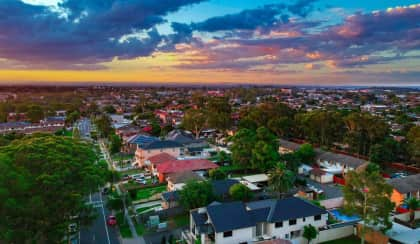Will the latest rate hike undo rebounding market confidence?
While the March lending data showed confidence is returning among property buyers, the Real Estate Institute of Australia (REIA) warned the latest rate hike could wither the emerging green shoots in the market.

The Australian Bureau of Statistics’ (ABS) latest lending indicators showed the overall value of new loan commitments for housing rose 4.9 per cent to $24 billion in March.
A further look into the data shows that first home buyers are driving the strong monthly gain in lending activity, with a 5.5 per cent jump in new owner-occupier loan commitments to $16 billion in March, while new investor loan commitments rose 3.7 per cent to $8 billion during the same period.
But despite the latest lending data indicating a “slow improvement in confidence”, REIA president Hayden Groves said that the overall figures “falls well short of recent highs”.
The executive highlighted that the number of first home buyer loan commitments was down compared to the same month last year, with the figures 22 per cent lower annually.
“[The] value of new owner-occupier loan commitments in March remained 25 per cent lower compared to the same time last year, while new investor loan commitments were 29 per cent lower, showing we are a long way from where buyers were last year,” he explained.
ABS’ head of finance statistics, Dr Mish Tan, concurred with the observation and explained the ongoing trend since the pandemic.
“During the second half of 2020, first home buyer lending reflected the strength in demand for housing during the pandemic, with new commitments peaking in January 2021 and declining by half since then,” Dr Tan said.
Data also showed borrowers are still seeking out lower interest rates amidst the RBA’s cash rate hike, as the central bank continues its fight against surging inflation.
Over the month, the value of new owner-occupier housing loan refinances between lenders rose 3.9 per cent to $14.2 billion. Around 28,000 owner-occupiers refinanced in March alone.
Mr Groves cautioned the latest interest rate rise could potentially see a reversal in lending trends due to increased strain in housing supply and the broader economy.
One year from its first cash rate increase of this current cycle, the Reserve Bank of Australia (RBA) opted to raise the cash rate by 25 basis points to 3.85 per cent during its May policy meeting — the highest level for the central bank’s benchmark interest rate since May 2012.
“Monetary and fiscal decision makers should be doing everything they can to reassure Australians and alleviate the pressures many in the economy are experiencing.
“This month shows a small signal of hope returning to the market, particularly for first home buyers, but whether this trend continues remains to be seen,” he stated.
On the supply side, the Housing Industry Association (HIA) noted that the latest lending figures showed lending for the purchase or construction of a new home remained at its lowest level in 15 years.
“The number of loans issued to purchase or construct a new home remained stable in March compared to the previous month, to be 30.7 per cent lower than at the same time last year,” HIA’s chief economist, Tim Reardon, noted.
He pointed out that the number of loans issued for purchasing or constructing new homes in the current period was the lowest since November 2008, when the global financial crisis led to a decline in building activity.
“This data confirms that ongoing and significant declines in new home sales will see new home commencements slow significantly in the second half of 2023, under the weight of the higher cash rate.”
Mr Reardon said there are very long lags in the cycle and the full impact of the rate increases would still hit the market.
“The weak lending figures observed by the ABS in March will not be apparent in other economic indicators until 2024, when the volume of homes under construction declines more markedly,” he said.
“Given these long lags, the RBA shouldn’t be waiting to see unemployment rising before pausing the increase in the cash rate,” he concluded.
